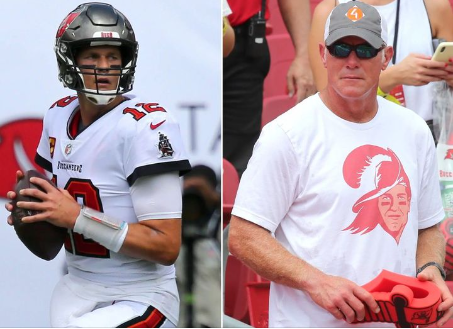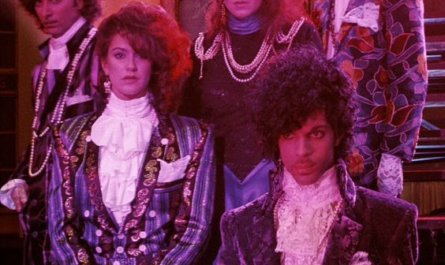Similarities Between Tom Brady and Brett Favre
[bg_collapse view=”button-orange” color=”#4a4949″ expand_text=”Show More” collapse_text=”Show Less” ]
While Tom Brady and Brett Favre will both go down as two of the greatest quarterbacks to ever play the game, their styles and approaches to the position differed in some key ways. However, there were also many similarities that helped contribute to their incredible success and longevity in the NFL. Both were fierce competitors with incredible drive that pushed them to keep performing at an elite level well into their 40s. Let’s take a closer look at some of the biggest similarities between these two legendary QBs.
Competitiveness and Drive
One of the most striking similarities between Brady and Favre was their unmatched competitive fire and will to win. They simply hated losing more than most and would do whatever it took to come out on top. This mindset fueled incredible longevity, as both quarterbacks refused to slow down or walk away from the game even as they aged. Into their late 30s and early 40s, Brady and Favre were still leading their teams deep into the playoffs on a regular basis.
Their competitive fire was always burning hot. Even in practice or meaningless preseason games, they played every down like it was the Super Bowl. Teammates and coaches often commented about how intense Brady and Favre were, whether it was during games or just trash talking in the locker room. The fire to compete and prove doubters wrong is what extended their careers far beyond what most thought possible. It took an unquenchable competitive thirst to still be performing at an MVP level in their 40s.
Extension Ability
Another key trait Brady and Favre shared was an uncanny ability to extend plays outside the pocket. When the initial blocking scheme broke down or receivers weren’t immediately open, both QBs could scramble to buy more time. They possessed the athleticism and awareness to feel pressure coming and slip away from would-be sacks. Whether it was side-stepping, spinning, or reversing field, Brady and Favre found ways to stay alive.
Once on the move, their eyes remained downfield looking for openings to emerge. Extended plays often resulted in big gains as receivers worked to get open against an improvised defense. Brady and Favre racked up countless highlight reel throws after scrambling away from pressure. They set the standard for playmaking ability outside the pocket that quarterbacks try to emulate today. The gift of being able to extend plays kept drives alive and was a huge factor in their success over long careers.
Risk-Taking Mentality
Another trait that linked Brady and Favre was a willingness to take chances and make risky throws. While Brady’s game is often characterized as more conservative now, earlier in his career he took plenty of chances like Favre. Both QBs understood that the position requires calculated risks, especially in crucial moments. They lived for the opportunity to lead game-winning drives and weren’t afraid to force throws into tight windows.
This risk-taking mentality resulted in highlight reel touchdowns but also the occasional costly interception. Favre in particular was notoriously willing to gamble, sometimes to his own detriment statistically. However, it also fueled incredible comebacks and last second victories throughout their careers. Brady and Favre played with a fearlessness that was infectious to teammates and thrilling for fans. The chance to deliver in crunch time is what made them so compelling to watch for nearly two decades.
Differences in Style
While Brady and Favre shared key traits that contributed greatly to their Hall of Fame careers, there were also notable differences in their playing styles. Brady has always emphasized precision and decision making over risk-taking. Favre relied more on natural instincts and playmaking ability.
Accuracy and Decision Making
The biggest difference was accuracy and decision making. Brady is widely considered the most accurate passer in NFL history. He takes an almost surgical approach focused on proper footwork and mechanics to deliver the ball exactly where it needs to be. Brady studies film obsessively to read defenses and make the smart throw, even if it isn’t the riskier one.
In contrast, Favre was much more of a gunslinger. He possessed a rocket arm but wasn’t as focused on textbook mechanics and precision. Favre played more on instincts and felt the game better than anyone. However, this led to higher interception rates than Brady as Favre was willing to force throws into tighter windows. While he made countless highlight throws, Favre’s gunslinging style was a bit more reckless at times.
Reliance on Mechanics
Related to accuracy and decision making is how much each relied on mechanics versus instincts. Brady is renowned for his attention to small details in footwork, dropbacks, and ball placement. He follows a strict regimen focused on refining technique. In contrast, Favre was much more of a natural playmaker who relied on his instincts and arm strength.
While Favre worked hard, he wasn’t as obsessed with mechanics as Brady. Favre simply saw and reacted faster than most defenses. This allowed for spectacular improvisation but was riskier long-term. Brady’s laser focus on mechanics and precise decision making has allowed his game to age more gracefully deep into his 40s. Favre’s style caught up to him a bit earlier in Green Bay before later resurgences with the Jets and Vikings.
Conclusion
In the end, Tom Brady and Brett Favre will both be remembered as two of the greatest and most beloved quarterbacks to ever play. Their competitive fire, playmaking ability, and longevity set the standard that few will ever match. While their styles differed in key areas like accuracy, decision making, and reliance on mechanics, their will to win and take risks is what truly defined them. Brady and Favre pushed each other to greater heights and cemented their legacies among the best to ever do it. Their incredible careers stand as a testament to different paths to success at football’s most important position.
[/bg_collapse]



